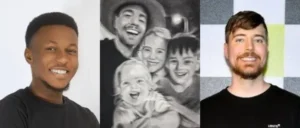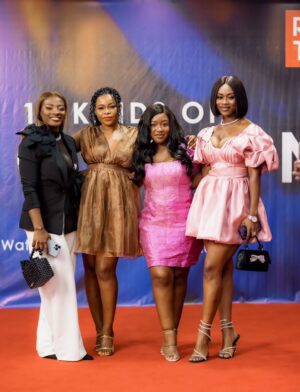
In the vibrant city of Accra, Ghana, amidst the hustle of its bustling markets and the rhythms of everyday life, lived two individuals whose lives were intertwined in a complex web of dependency. Kwame, a software engineer, and Nia, a talented artist, had been together for several years. To the outside world, their relationship appeared picturesque, but beneath the surface lay a tumultuous bond marked by codependency and emotional turbulence.
Kwame and Nia first met during a cultural festival. Kwame, with his reserved demeanor and analytical mind, was immediately captivated by Nia’s passionate spirit and creative energy. Their connection was intense from the beginning, but what started as a deep bond gradually evolved into something more restrictive and consuming. Nia’s art, once a source of joy and independence, began to recede as she became increasingly dependent on Kwame for emotional support.
Kwame, on the other hand, found himself torn between his need to nurture and his desire for personal space. His work in technology demanded long hours, often leaving him drained. Yet, he felt an overwhelming responsibility to be Nia’s emotional anchor. This unbalanced dynamic began to strain their relationship, leading to frequent arguments and a growing sense of isolation for both.
One fateful evening, while Kwame was working late on a critical software project, Nia decided to visit a local art exhibition. There, she encountered Kofi, a fellow artist who was renowned for his innovative approach to traditional African art. Kofi’s presence and his views on creativity were refreshing and invigorating for Nia. Their conversation about the freedom of artistic expression and the importance of self-discovery struck a chord with her.
As weeks passed, Nia and Kofi continued to meet, discussing art, culture, and life in general. Kofi’s perspective on relationships and personal growth contrasted sharply with the codependent dynamics she experienced with Kwame. His insights gradually made Nia reflect on her own life and the unhealthy patterns that had developed. Nia began to question whether she had lost herself in the process of trying to save her relationship with Kwame.
Meanwhile, in Nairobi, Kenya, Nia’s best friend, Amani, noticed the subtle changes in her friend’s demeanor. Amani, who was a counselor specializing in relationship dynamics, had always been a source of support for Nia. She observed Nia’s growing restlessness and sensed that her friend was on the brink of a crucial realization.
Amani decided to reach out to Nia, suggesting they have a heart-to-heart conversation. During their talk, Nia opened up about her feelings of entrapment and her growing relationship with Kofi. Amani listened attentively, offering empathetic advice and encouraging Nia to explore her own needs and desires apart from Kwame.
The conversation with Amani was a turning point for Nia. She began to understand that her relationship with Kwame was more about clinging to each other’s vulnerabilities than about mutual growth and support. She realized that she needed to reclaim her autonomy and confront the unhealthy patterns that had emerged.
Determined to make a change, Nia decided to address her feelings directly with Kwame. One evening, after a particularly tense argument, Nia sat down with Kwame and expressed her thoughts and concerns candidly. She spoke of her need for space and independence, and how she felt stifled by the codependent dynamic that had taken over their relationship.
Kwame, initially defensive and hurt, was taken aback by Nia’s forthrightness. He had always believed that their issues could be resolved through more effort and sacrifice, but he was confronted with the harsh reality that their relationship had become unhealthy. For the first time, he was forced to confront his own role in perpetuating the codependency and his inability to see the growing rift between them.
Nia’s decision to break the bond was not easy. She grappled with feelings of guilt and fear of being alone. Yet, she knew that continuing in the same pattern would only lead to further deterioration of both their well-being. With Amani’s support and the newfound clarity gained from her time with Kofi, Nia made the difficult choice to end the relationship with Kwame.
Kwame, while heartbroken, began to introspect about his own needs and the ways in which he had neglected his own well-being. He sought counseling and started to focus on his personal growth. The separation allowed both Kwame and Nia to pursue their own paths and find new ways to heal and grow.
Months later, Nia’s art began to flourish once again. Her creative energy, which had been suppressed for so long, was reignited. She held a successful exhibition in Lagos, Nigeria, showcasing a new collection that was deeply influenced by her journey of self-discovery and healing. The vibrant city of Lagos, with its rich culture and artistic heritage, provided the perfect backdrop for her renewed artistic expression.
Kwame, in turn, found solace in his work and began exploring new hobbies and interests. He took a trip to Cape Town, South Africa, where he immersed himself in the city’s diverse culture and scenic beauty. The experience helped him gain a fresh perspective on life and relationships.
In the end, both Kwame and Nia learned valuable lessons from their tumultuous relationship. They discovered the importance of self-awareness, personal growth, and the need to maintain a healthy balance in relationships. Their individual journeys of healing and self-discovery allowed them to emerge stronger and more self-assured.
Their story, marked by struggles and breakthroughs, became a testament to the power of breaking free from unhealthy bonds and the possibility of finding oneself amidst the chaos of a bad romance. Through their experiences, they demonstrated that even in the face of emotional challenges, it is possible to reclaim one’s life and forge a path towards a healthier, more fulfilling future.








